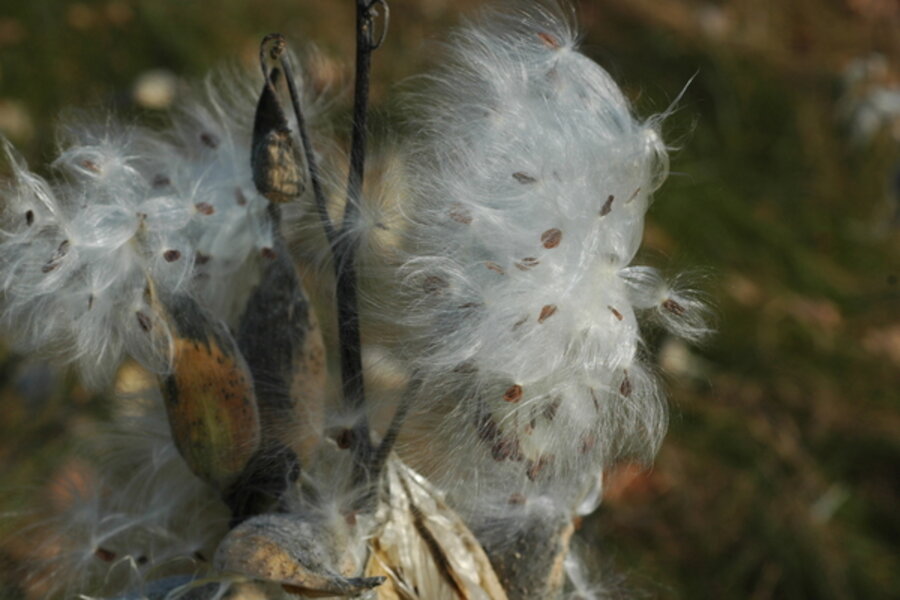Milkweed: Not just for monarch butterflies
Loading...
I expect the real thing before October is over, but for now it’s snowing milkweed silks at my house. They’re a great example of evolutionary design: seeds embedded in wispy hairs -- all lighter than air -- that float to new destinations where they germinate and produce the next generation of plants.
Defending a plant with “weed” in its name is tricky, but few would argue against natives such as butterfly weed, Joe-pye weed, common sneezeweed, and ironweed. Still, common milkweed may be pushing the envelope for many gardeners.
I garden in the country and welcome anything that blooms. Well, almost anything. I could do without purple loosestrife (Lythrum salicaria) and wild parsnip (Pastinaca sativa).
A native plant that's long been useful
But I like the common milkweed that grows on the fringes of my yard. This North American native has a long history as an herbal cure, so it's fitting that its genus name is Asclepias, a reference to Asklepio, the Greek god of medicine.
We’ve have pretty much stopped using milkweed as a remedy for rheumatism and snake bites, and we no longer weave its silk into candle wicks or use it to for stuffing. (During World War II, schoolchildren were encouraged to collect milkweed floss to fill life jackets and “save the lives of sailors and airmen.”)
But the plant’s usefulness hasn’t ended, especially from the point of view of monarch butterflies. In one of their life stages or another, monarchs eat its leaves, drink its nectar, lay their eggs on its leaf undersides, and attach their chrysalises to its stems. Milkweed is Monarch Mecca.
Nice in the garden, too
There’s plenty for the gardener to like, too.
No life-sustaining virtues, but umbrella-shaped clusters of highly sweet-scented flowers that vary in color, faded pink to dusky rose. And unbranched plants, 3 or 4 feet tall, that can fit nicely in the back of a perennial garden or on the edge of the lawn. There, they will produce seedpods that will explode in fall and produce the year's first "snow."
-----
Karan Davis Cutler is one of nine garden writers who blog regularly at Diggin’ It. She's a former magazine editor and newspaper columnist and the author of scores of garden articles and more than a dozen books, including “Burpee - The Complete Flower Gardener” and “Herb Gardening for Dummies.” She now struggles to garden in the unyieldingly dense clay of Addison County, Vt., on the shore of Lake Champlain, where she is working on a book about gardening to attract birds and other wildlife. To read more by Karan, click here.






